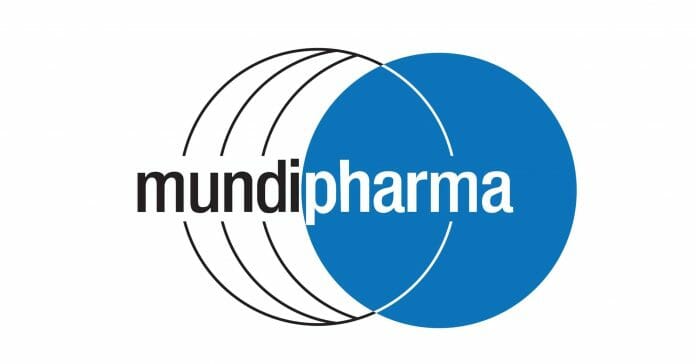Business Today Malaysia speaks to Mundipharma Pharmaceuticals representative, Suresh Pragasam, regional general manager, Southeast Asia, on the evolution of health technology in the healthcare industry in Malaysia.
By Poovenraj Kanagaraj
Malaysia’s healthcare system holds a reputation among its counterparts across the globe as home to one of the best healthcare practices. Having successfully gained confidence from the locals in the system, the country’s healthcare system has also attracted more than 1.2 million patients from overseas which further contributes to its reputation. And like many other sectors, the healthcare industry has continued to evolve and has done so by adopting technology into its practices.
Suresh Pragasam, Mundipharma regional manager says Malaysia is currently integrating more digital healthcare technologies to stay relevant and there is definitely room for improvement to adapt an ongoing process to upskill and adopt technologies for us to move forward into the fourth industrial revolution (IR 4.0).
“Digital healthcare technologies are developing at a rapid rate and we will need to adapt if they want to stay relevant,” says Pragasam.
“In my opinion, Malaysia has a great potential to excel especially in the healthcare sector. As a mater of face, Malaysia was recently ranked number one for having the World’s Best Healthcare under the category of “Best Healthcare in the World for 2019 International Living Annual Global Retirement Index”,he added.
According to the Malaysia Healthcare Travel Council, the number of healthcare travelers to Malaysia has been increasing steadily every year with data provided by the council showing that numbers of healthcare travelers in 2018 have exceeded more than 1.2 million, an increase compared with 2017, when the number stood at 1.05 million.
Rising challenges
However, according to the regional general manager while health technologies have a critical role in the prevention, diagnosis and treatment of illness and disease, access to health technology remains a challenge particularly in developing countries. This among other challenges are proving to weigh down on the industry especially when the industry is heavily regulated.
Pragasam also says that another challenge is to discover and uncover more ways for the health and tech industry to work together.
“In order to benefit from the value technology can bring to patients, we have to understand that the pharmaceutical industry is heavily-regulated and tech companies tend to be much more entrepreneurial, customer-centric and rely more heavily on partnerships,” he tells Business Today Malaysia.
He also further adds that compared to many other industries, pharmaceutical production underlies more demanding regulations. Changes to production mean changes to the machines, processes and ultimately the product itself.
“In the factory of the future, everything and everyone is connected such as humans, machines, processes and IT, therefore it is important for Malaysia to integrate digital healthcare technologies into its services,” he highlighted.
Additionally, there are countless possibilities for the industry to utilise digital healthcare technologies, like developing a smart phone application for medical or patient needs, having a virtual reality device for training and better understanding, according to Pragasam.
“Mundipharma is always moving forward to discover and explore more digital healthcare technologies as part of our contribution to the healthcare industry and care for patients,” Pragasam told Business Today Malaysia.
However, integrating technology into the current healthcare system may take longer than one might expect, as Pragasam says, being able to get vital equipment and medical supplies from point A to point B on time is not always a straightforward process.
“In Malaysia, we still have rural areas which needs medical supplies and delivering these medical supplies on time is a very important aspect,” he says.
Pragasam factors in the poor infrastructure in the rural areas and hospitals located in these areas are at times inaccessible to vehicles, especially during rainy seasons. Making a reference to a San Francisco based startup, Zipline which developed a delivery-drone that is currently being utilised by hospitals across Rwanda and Ghana to supply emergency blood products,Pragasam says Malaysia could highly benefit from delivery drones.
“Delivery drones would be able to reach speeds of 100 kmph in just a second,it can fly high enough to avoid any objects in the air, and have the ability to handle severe wind, rain and lightning,” says Pragasam,who believes this will highly benefit the country,especially the rural areas.
Evolutionising the industry
Another evolution the healthcare industry has witnessed in recent years have been virtual healthcare, which involves virtual visits with doctors, nurses or other healthcare specialists through communication technology. This has been done via video conferencing,messaging and mobile apps which have proven to serve as credible medical platforms.
According to Pragasam, advantages of utilising virtual healthcare is that patients have the option to stay home for check-ups and status updates.In return it also allows patients to consult out-of-town specialists without having to travel and open up lines of communications leading up to in-person visits.
One other evolution the pharmaceutical industry has witnessed grow over the years has been Data Integration (DI). Pragasam says there have been a gradual evolution over the last few generations of DI strategy, starting with the use of relational databases. He goes on to say that with the explosion of big data, artificial intelligence (AI) and machine learning (ML),we could be able to use these tools to build scalable data curation systems.
“AI is used to stimulate human intelligence such as visual perception and speech recognition and ML allows us to assess massive amounts of data simultaneously. As computing costs go down and the availability of data goes up, the doors to the use of precision medicine are opened,” says Pragasam.
He stresses that the integration of technology would definitely help our industry to overcome this challenge.
He also highlights that technology such as 3D printing can play a vital role in the industry, where new printers can create medical tools using any buildable material, from plastic to stem cells. Pragasam also says that with 3D printing, artificial bones for surgical reconstructions, custom-tailored prosthetic, ventilated scoliosis braces and support for amputees can produced. Additionally, tiny organs or “Organoids” made of layered stem cells that can grow inside the body of a patient and take over when an old organ fails can be produced as well.
“Using 3D printers for healthcare and for devices or organs to be used on patients should be aligned with safety and medical regulations especially if printing organoids or something that would be sued on patients,” Pragasam stressed.
Being apart of the pharmaceutical industry, Mundipharma too has applied technology as a vital part of its journey in evolving along with the industry.
According to Pragasam, Mundipharma has taken a new approach to healthcare, underpinned by a vision to harness technology in order to provide game-changing solutions and deliver superior patient outcomes. And one way it has succeeded is by tapping into the vast usage of smartphone applications.
“Mundipharma developed breatherite, an innovative mobile app that employs augmented reality technology to address errors in inhaler use among asthma sufferers,” Pragasam points out.
Pragasam goes on to say that both the technology and pharmaceutical industry would be able to create more value for patients by converging the health and technology ecosystems, to leverage on the unique expertise that each industry brings.
“For example if we are talking about industry insights, the pharmaceutical industry would be able to provide in-depth knowledge on patient or HCP behavior and needs, backed up with scientific expertise,”
“On the other hand, the tech companies would be able to provide us with the tools to capture those data effectively and provide predictive analytics for the pharma companies to provide more insightful data and added value for the patients,” Pragasam highlighted.










